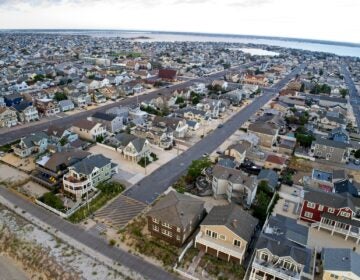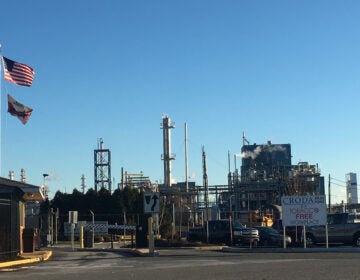A teen phenom is working to protect New Jersey’s watershed
Sonja Michaluk has spent a decade working to preserve wetlands and species along the Princeton Ridge.
Listen 3:58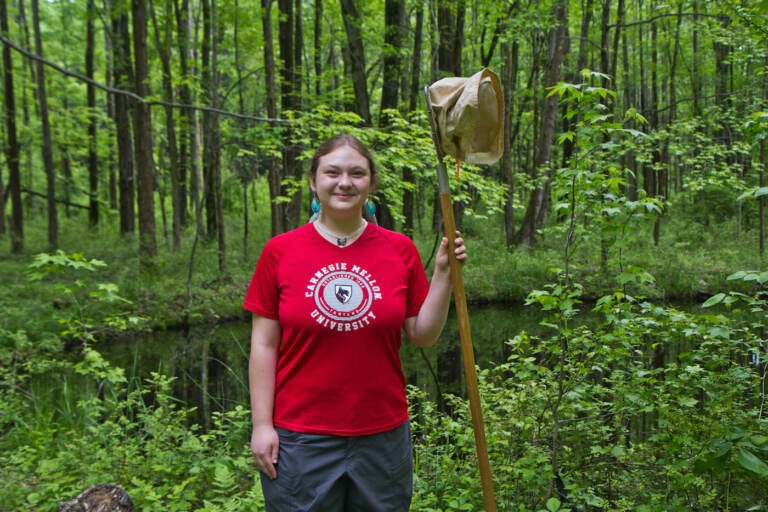
Sonja Michaluk evaluates water quality in the wetlands around Princeton, N.J., by looking at the inverabtrate life found in water samples. (Kimberly Paynter/WHYY)
Sonja Michaluk’s lab at her family’s home in Princeton, New Jersey, encapsulates her passion for exploring nature. Among her microscope and science textbooks are shelves of knickknacks — from her grandfather’s rock collection, to jars of seashells she’s collected, labeled by the location where she found them.
Among Michaluk’s prized possessions are her beloved spotted salamanders, Snapdragon and Sprinkles.
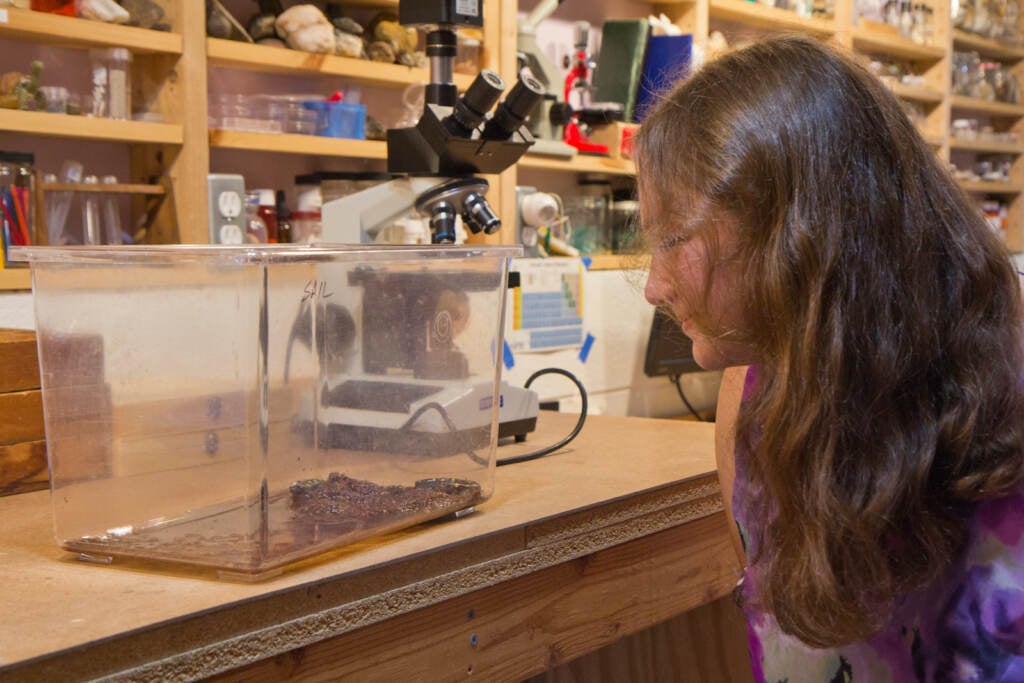
When they were still eggs, she rescued them from the side of the road along the Princeton Ridge — a lush area of forest and wetland that she’s been working to protect from development.
“They’re a very intelligent species,” Michaluk said. “Surprisingly, each one has its own unique personality. Some of them like to spend more time in the water. Some of them like to burrow more. Some of them generally like to eat more. They also form bonds with each other.”

At 19 years old, Michaluk already has more than a decade of experience working to protect the environment. The Princeton native has collected scientific data to help preserve ecologically sensitive wetlands and species, she’s spoken at national organizations about watersheds and environmental advocacy, and MIT even named an asteroid after her.
Now entering her junior year at Carnegie Mellon University in Pittsburgh, Sonja finds time to return home to study and preserve the Princeton Ridge.
The forest and wetland habitats in this ecological area in Mercer County are among the most environmentally sensitive in the region. The area provides homes for endangered and threatened species, including the Eastern Box Turtle, Cooper’s Hawk, and Barred Owl.
“By conserving these different plots of land, someone can … enjoy these beautiful places, and learn about the natural world, and be able to have access to open spaces,” Michaluk said. “It’s especially important for making sure that our drinking water is clean and safe. And … to make sure that all the beautiful creatures we live alongside get protected and are able to thrive, especially ones where their numbers are drastically decreasing due to habitat loss and fragmentation.”
After a rain-filled morning, Michaluk walked through a muddy stretch of wetland that she’s trying to protect from the building of mansions.
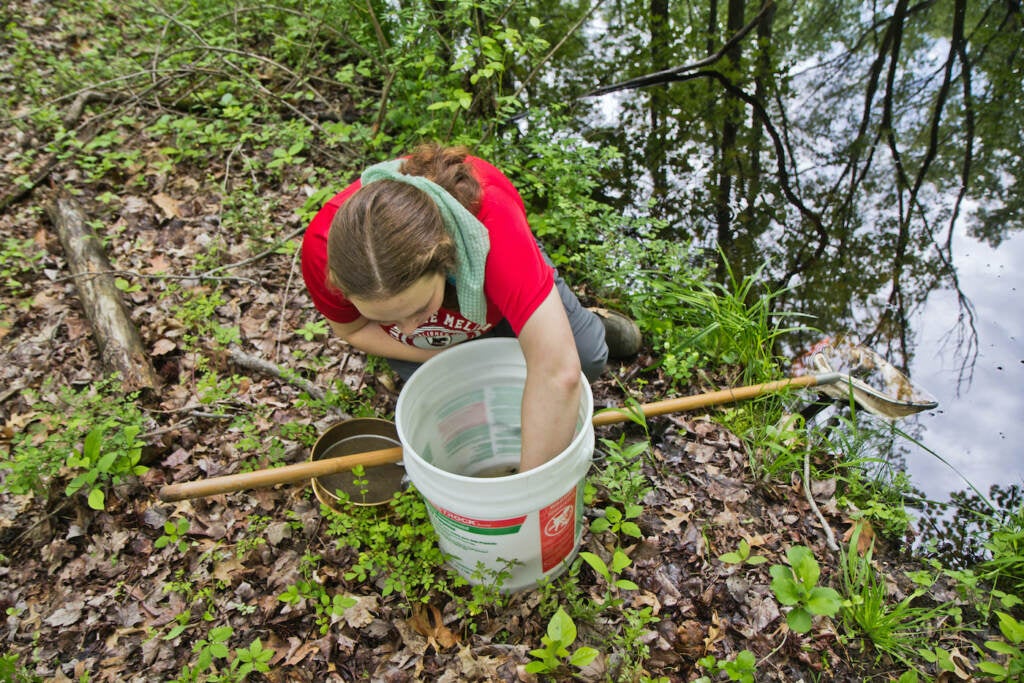
Several amphibians rely on this wetland to reproduce — from frogs to Michaluk’s favorite spotted salamanders. The wetlands also provide food for other animals, such as foxes, turtles, and birds, in addition to helping mitigate flooding and filtering water. Many of the streams along the Princeton Ridge provide drinking water for residents.
Michaluk knelt in the dirt below a canopy of trees, and using a net, she scooped up the water from a vernal pool and poured it into a bucket. She picked up a snail feeding on a leaf with her bare fingers and put it back in the water. Two tadpoles swam in the bucket, bringing a smile to her face.
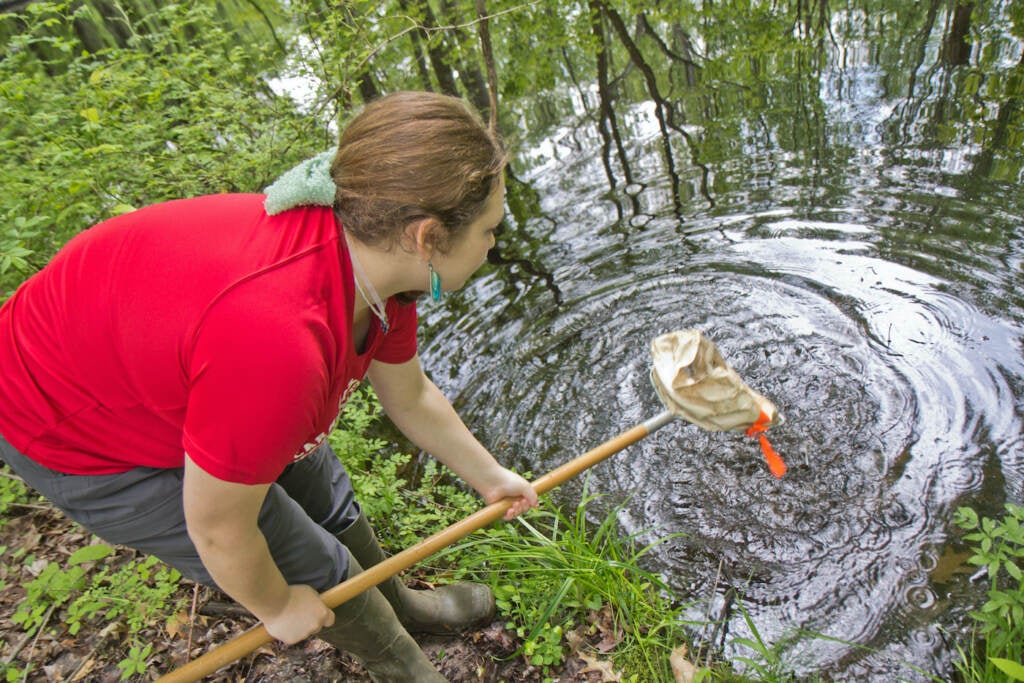
“They’re just so elegant, and they’re tenacious, and they’re really cute, too,” she said. “But I also always loved the metamorphosis of them.”
Finding life means the wetland is healthy, and Michaluk hopes that will make a case for protecting it from development.
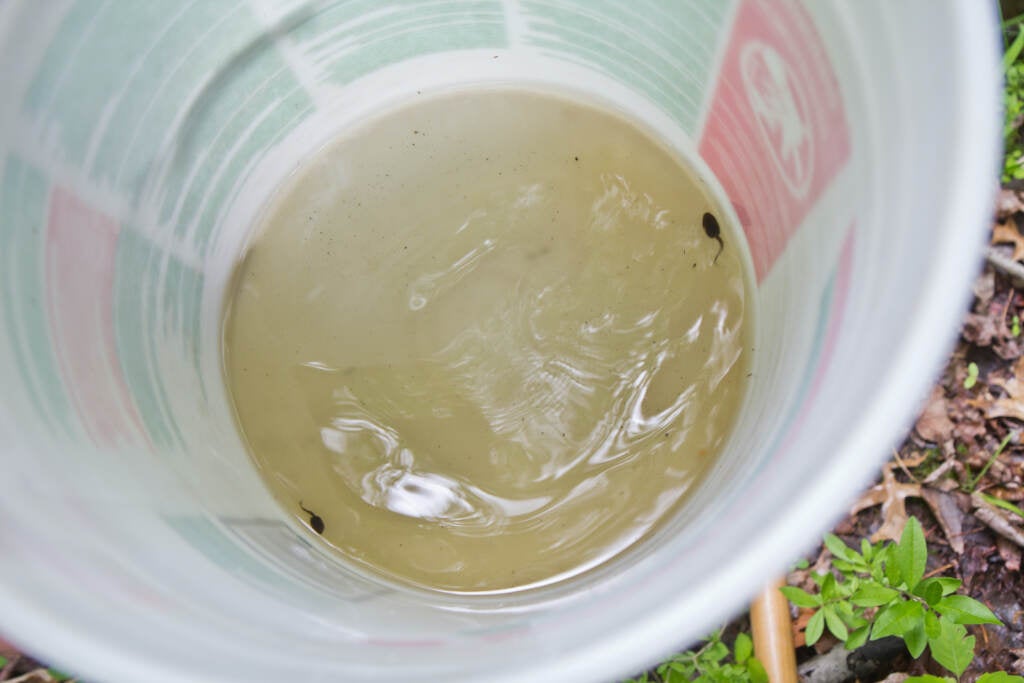
“By looking at what lives in an ecosystem, we can tell how healthy it is,” she said. “If the water is very dirty and very polluted, you will see the absence of species that are very sensitive to pollutants.”
When Michaluk was just 11, her public testimonies helped stop a national pipeline project from cutting through a stream. And last year, as a member of the Ridgeview Conservancy advocacy group, she helped preserve a wetland that was set to be developed into 19 luxury homes.
The organization’s director Jaspal Singh said he’ll never forget the first time Michaluk spoke in front of Princeton’s zoning board four years ago, convincing them to block the group of “McMansions” from being built on the wetland. Until her involvement, the group hadn’t made much progress, he said.
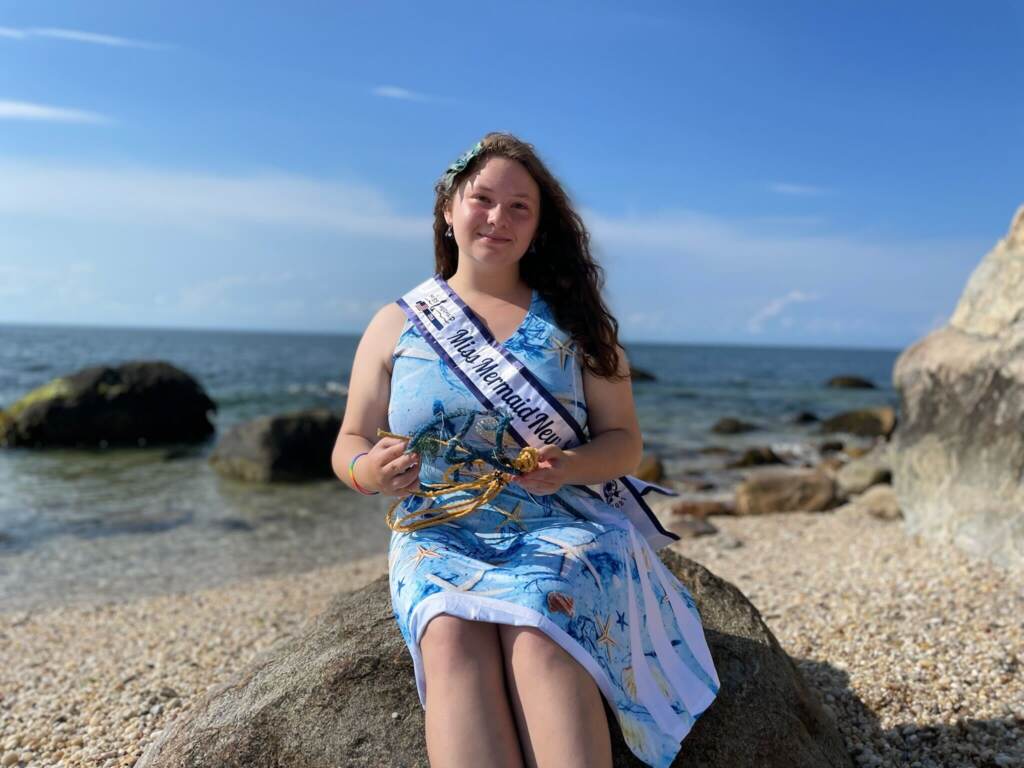
“At that point she was [15 years old] and the board chair thought he was dealing with a trained subject matter expert Ph.D.,” Singh said with a chuckle. “He was kind of cross-examining her… She maintained significant poise, and stuck to her presentation. And … really turned the sentiment of the board in our favor.”
Since then, the group has preserved 200 acres along the Princeton Ridge.
“There’s just something so beautiful about sharing an ecosystem, and seeing all this biodiversity, and all these other animals here,” Michaluk said of the preserved lots of land. “It’s amazing to see an area that isn’t choked out by honeysuckle and bittersweet vines, and you can hear the birds singing, and it’s just so peaceful.”
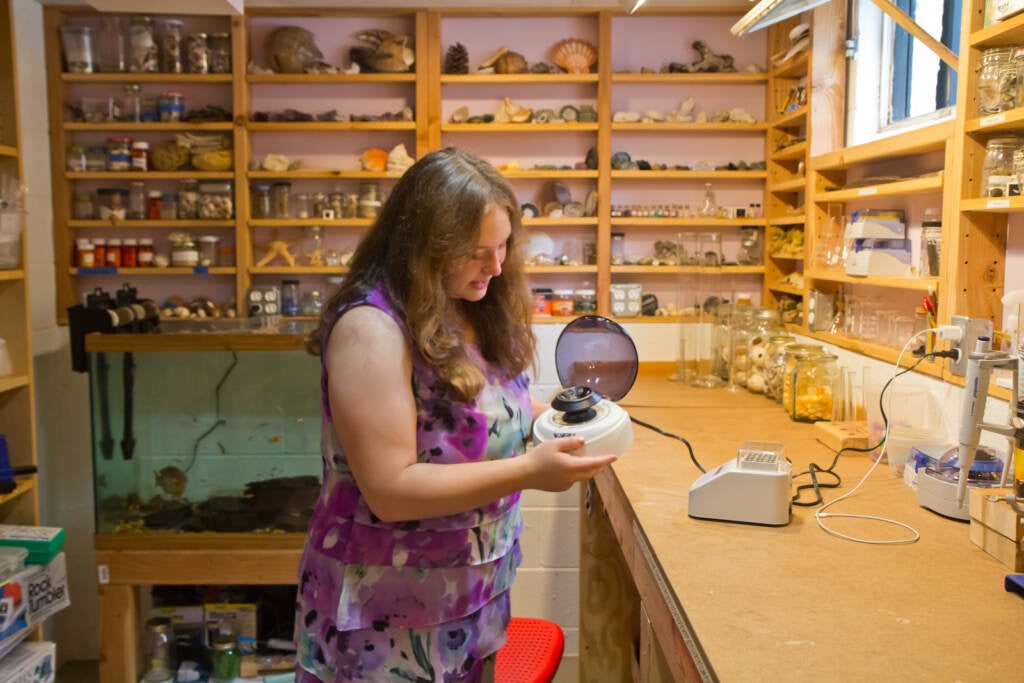
Michaluk is developing a bioassessment tool meant to help citizen scientists analyze species without help from expert taxonomists, which are in short supply, she said. The technology uses DNA barcoding to determine species beyond the family level in order to better understand what’s in the water. She hopes the tool will also be used in professional and academic settings.
“We can use this data to make science the language of the debate on how we manage our natural resources and how we make sure that areas in need of protection get protected … and make sure our water reservoirs are kept clean and make sure that these organisms … get protected as well,” Michaluk said.
Her work doesn’t stop there. Last week, Michaluk spent time on a sailboat in New England, collecting fishing nets and ropes that had washed ashore to raise awareness about this pollution. Her goal is to upcycle 50 pounds of rope.
Terry Collins, a professor of green chemistry at Carnegie Mellon University, said he is impressed by Michaluk’s drive. Earlier this year, she emailed the professor to inquire about working in his lab — providing a list of her achievements
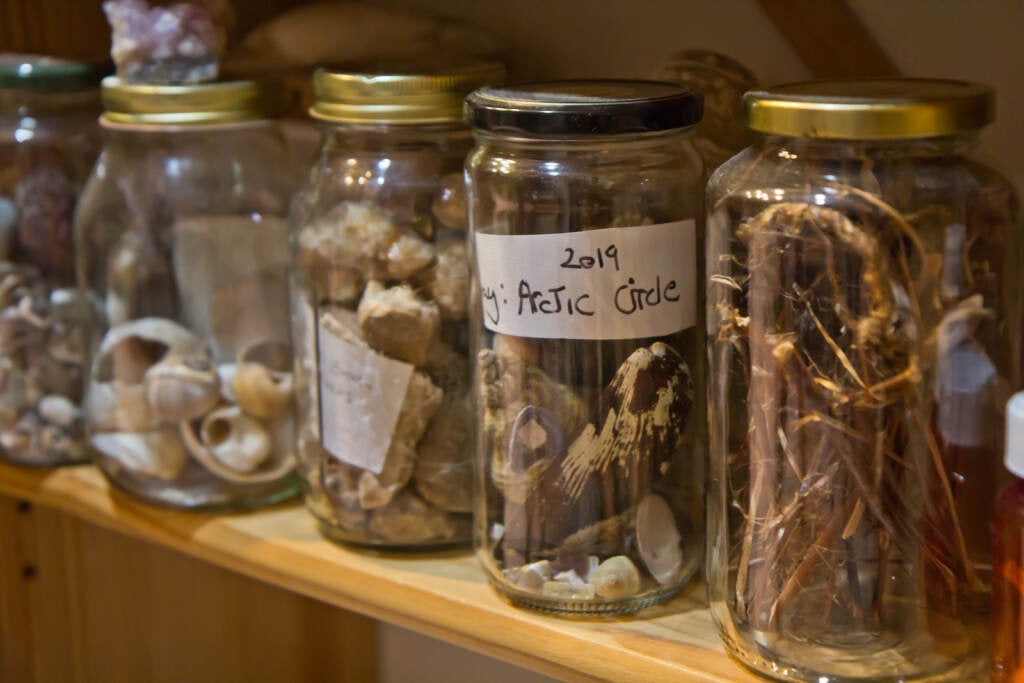
“When you’ve got a young person who’s inspired to really do something about the environment, the classic example is Greta Thunberg, and they’re very young and really do not have a lot of sophisticated skill sets and they just go out and develop it themselves — this is really impressive,” he said.
Michaluk said she believes it’s crucial that everyone understands how their actions impact the environment. She encourages people to learn more about the negative consequences of activity such as development, using fertilizers and pesticides, and planting invasive species.

“A common misconception is that …. we kind of live above the ecosystem. But that’s not true,” Michaluk said. “We are a part of the ecosystems, the habitats that we dwell in. We need things like clean water, clean air and open spaces in order to be physically and mentally healthy. And in some ways, we’re no different from the salamanders. We kind of have the same fundamental wants and needs.”
WHYY is your source for fact-based, in-depth journalism and information. As a nonprofit organization, we rely on financial support from readers like you. Please give today.





